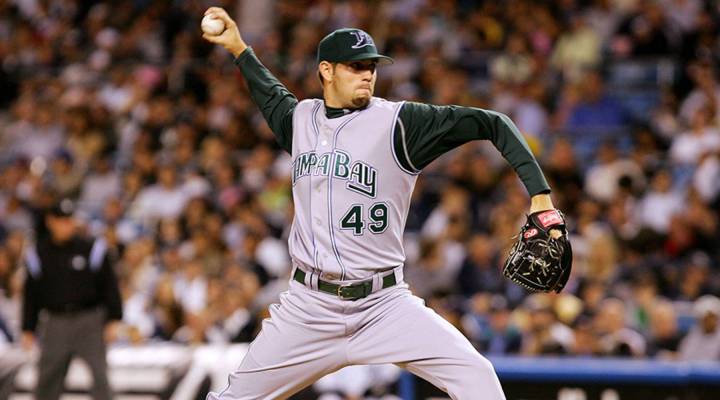
When did middle relievers in baseball get so expensive?

Baseball fans, this one is for you. Regular season is done, and the post season is about to begin, but over the course of a little more than 30 years, the makeup of a Major League Baseball team’s pitching staff has changed dramatically. What does this mean for a team’s payroll – and players?
Two long-time baseball writers weigh in on the change.
Tim Kurkjian, senior writer and analyst at “ESPN”
He believes the approach started with the Oakland A’s in the late ’80s with manager Tony La Russa and late-inning specialist, Dennis Eckersley:
“La Russa built a bridge to get the ball to Eckersley and he had a seventh-inning guy and an eighth-inning guy. He had it all set up and, to me, that’s where the whole relief pitching chain began. But it’s just unbelievable how we have changed the bullpen use in the game. Virtually every championship team of the last 30 years has had a deep, versatile bullpen. And now, thanks mostly to the Tampa Bay Rays, we start games with relievers and we pitch six relievers per game. Now we go into a post-game series and fully expect six relievers to work every game. It’s absolutely stunning to me the devaluation of the starting pitcher and the ascent of the reliever. It’s just a stunning change for anyone who has been covering it for as long as I have.
When I got started almost 40 years ago, we had pitchers throw complete games. Now we start games with a reliever. The other day, the Brewers started a game with Dan Jennings, a left-hander, who faced one batter and they took him out of the game. And that was the plan all along. That’s where we are in 2018. I believe there is a financial element to all of this. The Rays, for instance, who are changing the way that people look at how you build a pitching staff, simply cannot afford a front line starting pitcher as the Yankees and the Red Sox. So knowing they can’t trade for a really high-priced starting pitcher, and can’t sign one either because they’re a small market team, they say, ‘well, how do we get around that? We’re going to get around that by using relievers instead of starters.’ So there is a financial element involved and it’s not out of wanting to change the game. In some cases it’s out of necessity. The Rays don’t have any other choice. The only way to compete is to do it the way they did this year and it worked astonishingly well.”
Jayson Stark, senior writer at “The Athletic”
He’s worried that the new approach makes the game unwatchable.
“We’re reaching this point in baseball where what makes for great baseball strategy does not make for great entertainment strategy. At least not all the time. And if you really look beyond some of the remarks that the commissioner [Rob Manfred] has made, they go to this point. He understands that teams are so data driven and why they’re doing the things they do, how could you not understand it? But he’s worried about whether it makes his sport more entertaining to the casual fan. The essence of baseball for 100 years was, ‘who’s pitching tonight?’ If it’s [Clayton]Kershaw against [Max] Scherzer, if it’s [Chris] Sale against [Justin] Verlander, that is entertainment at its greatest. That’s the baseball equivalent of Lebron [James] against Steph [Curry]. But if you’re asking who’s pitching tonight and the answer is, ‘everybody,’ it’s not the same product. And it’s just one of many issues that fit into that category: baseball strategy versus entertainment strategy, which is more important?”
Stark also said this strategy has changed the way baseball writers think about who gets inducted into the Baseball Hall of Fame.
“I was never really sure that we should be using the old ‘magic numbers’ to decide who was a Hall of Famer or not, but now a lot of those magic numbers are just defunct. Somebody may come along, somewhere, sometime, who wins 300 games. But 200 wins is the new 300. And there might come a point in which we’re not really even looking at win totals at all. We’re going to have to think beyond the magic numbers, especially in pitching, because if we’re going to have just this really small group of high-end starters who pitch 200 innings a year, then wins are going to decline and all these numbers are going to change. And we’re going to have to look at who dominated within the context of the numbers of the era. Not how many games they won compared to Nolan Ryan.”
Click the audio player above to hear the full story.
There’s a lot happening in the world. Through it all, Marketplace is here for you.
You rely on Marketplace to break down the world’s events and tell you how it affects you in a fact-based, approachable way. We rely on your financial support to keep making that possible.
Your donation today powers the independent journalism that you rely on. For just $5/month, you can help sustain Marketplace so we can keep reporting on the things that matter to you.












